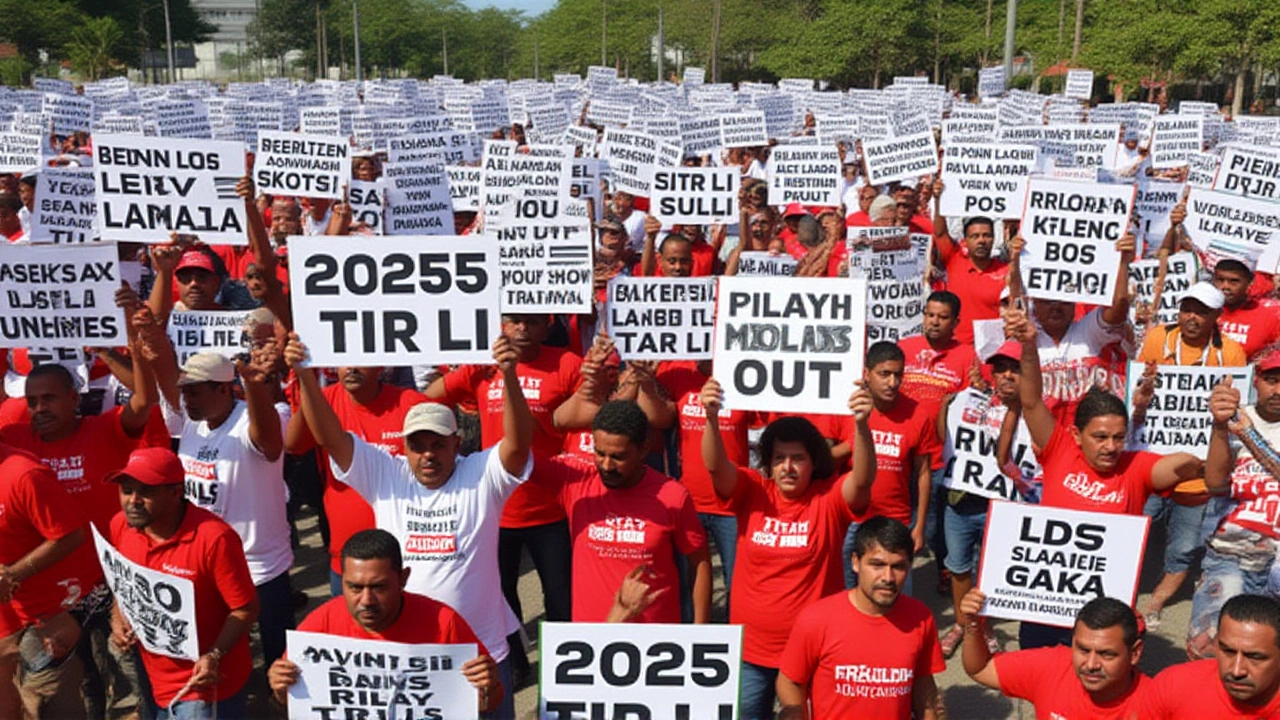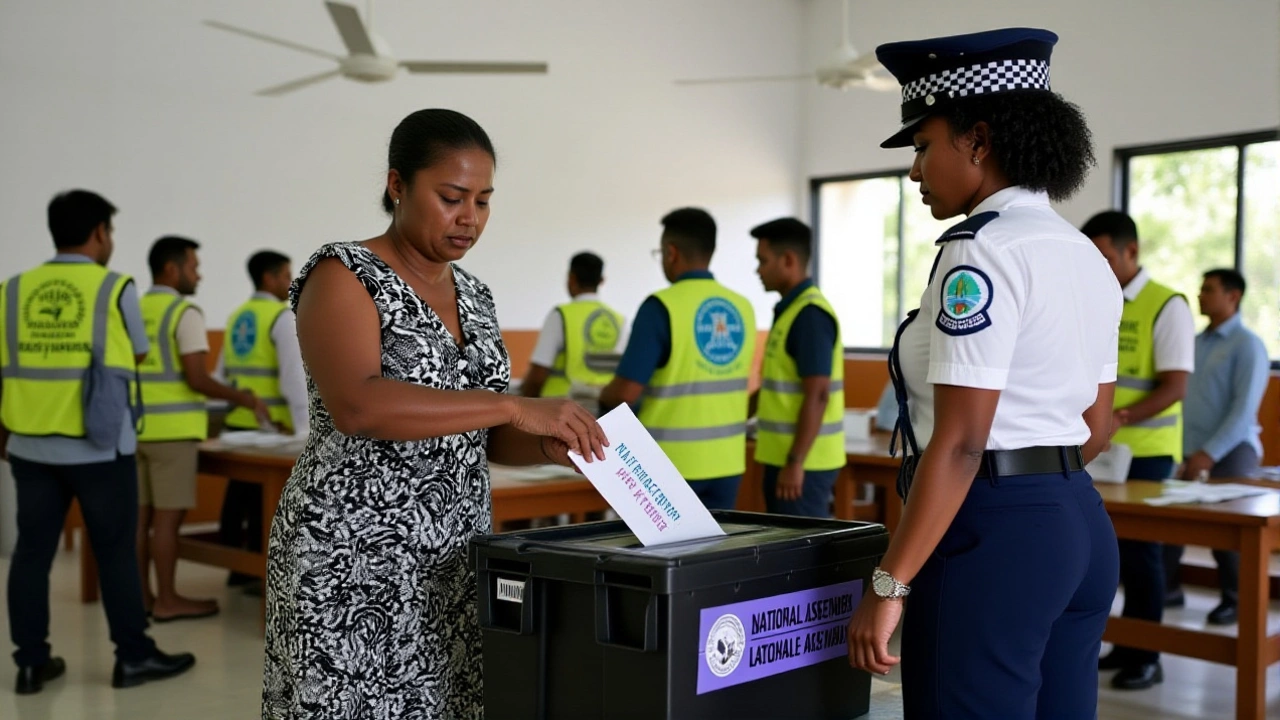By October 2025, Seychelles had welcomed over 390,000 international visitors — a 12% jump from the same period in 2024 and the first time since 2019 that arrivals surpassed pre-pandemic benchmarks. The surge, reported by Travel and Tour World, wasn’t random. It was the result of targeted marketing, new air links, and a quiet but determined recovery from years of pandemic-induced stagnation. What’s more, the growth didn’t come from scattered sources. Germany, France, and Russia accounted for nearly half of all arrivals, turning the Indian Ocean archipelago into a European escape hatch — even as geopolitical tensions simmered elsewhere.
From Stagnation to Surge: The 2024-2025 Turnaround
Just a year earlier, the outlook was grim. In 2024, Seychelles saw tourism arrivals grow by a mere 0.5%, well below the 2% target. Tourism earnings in local currency dropped 3.6%, according to the World Bank. Fewer flights, sluggish European demand, and lingering travel hesitancy had choked the sector. The nation’s economy, which relies on tourism for nearly 30% of GDP, was feeling the pinch.
But 2025 changed everything. By August, arrivals were already up 8% year-over-year. By October, they hit 12%. The numbers tell a story: Seychelles welcomed 350,879 visitors in 2023 — beating projections — and 2025 is on track to exceed 420,000 by year’s end. That’s not just recovery. It’s momentum.
The Airbridge Effect: Discover Airlines and the German Push
One pivotal moment came on March 15, 2025, when Discover Airlines launched its inaugural direct flight from Frankfurt to Seychelles International Airport on Mahé. The airline, known for leisure-focused routes, didn’t just add seats — it added visibility. German tourists, long drawn to the islands’ seclusion and coral reefs, now had a nonstop option. By July, German arrivals were up 27% compared to 2024.
France followed suit. The Tourism Department of Seychelles ran roadshows in Lyon, Marseille, and Paris, partnering with travel agencies that had abandoned the destination after 2020. Russian tourists — despite sanctions and reduced air connectivity — held steady, thanks to a loyal niche market and aggressive pricing by local operators. Both markets, historically the top two before the pandemic, were now surging again.
Marketing That Works: From Culinary Awards to Youth Challenges
Seychelles didn’t just wait for tourists to come back — it reinvented how it invited them.
In August 2024, it launched its First-Ever Youth Challenge to Promote Careers in Tourism, inviting high school students across Mahé to design digital campaigns. The winning entry — a TikTok series on “A Day in the Life of a Seychellois Dive Guide” — went viral in France. By January 2025, the campaign had generated 14 million impressions.
Then came the accolades. In May 2025, Seychelles was named Indian Ocean’s Best Emerging Culinary City Destination by the Global Tourism Awards — a first for the archipelago. The recognition spotlighted local seafood markets, Creole fusion restaurants, and the rise of sustainable fishing partnerships with chefs in Paris and Berlin.
And then there was the Middle East Mega Fam Trip — a curated 10-day itinerary for 25 travel influencers from Dubai and Riyadh. Their posts? Over 200,000 engagements. The result? A 19% spike in inquiries from the Gulf in Q3 2025.

The Political Wildcard: Elections and Economic Stability
While tourism surged, politics kept everyone on edge. On September 25-27, 2025, Seychelles held its most competitive election in a decade. Opposition leader Patrick Herminie of United Seychelles won 48.8% of the presidential vote, just shy of the 50% needed to avoid a runoff. Incumbent Wavel Ramkalawan of Linyon Demokratik Seselwa (LDS) took 46.4%. The runoff, scheduled for October 9-11, 2025, could shift policy priorities — including whether tourism remains the economic engine it’s been.
Still, the National Bureau of Statistics Seychelles — headquartered in Caravelle House, Victoria — reported no slowdown in foreign direct investment. Reserves remain strong. The economy grew 2.9% in 2024, with services — including tourism — driving 2.3 percentage points of that growth. That’s the real story: even with political uncertainty, the private sector kept pushing forward.
What’s Next? Climate, Capacity, and the Next 100,000 Visitors
But here’s the catch: Seychelles is tiny. Just 115 islands. Mahé holds 75% of the population. Hotels are filling up. Water stress is rising. And sea levels? They’re creeping up — threatening beaches that attract 90% of visitors.
The Tourism Department of Seychelles now talks about “quality over quantity.” They’re not chasing 500,000 tourists. They’re chasing 450,000 who stay longer, spend more, and respect the environment. New regulations limit new hotel construction on sensitive coastlines. Eco-certification is now mandatory for all resorts.
The goal? To become the first island nation to achieve carbon-neutral tourism by 2030. It’s ambitious. But given how far they’ve come since 2020 — when arrivals dropped 78% — it’s not crazy.
Frequently Asked Questions
Why is Seychelles’ GDP per capita listed as $16.7 billion in some reports?
That figure is almost certainly a typographical error. The World Bank reports Seychelles’ GDP per capita at approximately $16,700 in 2023 — still the highest in Africa. A $16.7 billion per capita figure would mean the entire nation’s $2 billion GDP was split among just 120 people. The error likely came from misplacing a decimal point. Corrected figures show Seychelles outperforms South Africa and Mauritius in income per person, thanks largely to tourism and offshore finance.
How did Seychelles recover faster than other island nations?
Unlike Bali or the Maldives, Seychelles didn’t rely on mass tourism. It focused on high-value, low-volume travel — luxury resorts, eco-tourism, and niche markets. When flights returned, they partnered with airlines that served affluent travelers. They also used data from the National Bureau of Statistics to target marketing precisely: French retirees, German families, Russian expats. Their small size became an advantage — they could pivot faster than larger countries.
What role did the 2025 elections play in tourism growth?
The elections themselves didn’t drive tourism — but political stability did. The fact that both major parties support tourism as a core economic pillar gave investors confidence. Even in a runoff, neither candidate proposed cutting tourism funding or raising visa fees. That predictability encouraged long-term hotel investments and airline partnerships. Stability, not slogans, kept the bookings coming.
Are Russian tourists still coming despite sanctions?
Yes — and they’re not going away. While direct flights from Russia were cut, many now fly via Dubai, Istanbul, or Doha. Seychelles doesn’t require visas for Russian citizens, and the local currency is stable. With inflation pushing Russians to seek affordable tropical escapes, Seychelles’ all-inclusive resorts — priced lower than the Maldives — became a smart alternative. Russian arrivals dropped 15% in 2022 but have since rebounded to 92% of 2019 levels.
What’s being done to protect Seychelles from climate change?
The government has invested $18 million since 2022 in coral reef restoration, mangrove planting, and coastal erosion barriers. All new resorts must use solar power and desalination units. In 2024, the Seychelles Conservation and Climate Adaptation Trust launched a bond program — the world’s first blue bond — raising $15 million to fund marine protection. Tourists now pay a $10 sustainability fee on arrival, which directly funds these projects. It’s not perfect, but it’s a model other islands are watching.
Will Seychelles surpass its 2019 tourism record?
Almost certainly. In 2019, Seychelles recorded 361,844 arrivals. With 390,000+ already logged by October 2025, and strong bookings through December, the final tally is expected to hit 430,000. That’s a 19% increase over 2019. The island isn’t just recovering — it’s redefining what’s possible for a small, remote nation in a post-pandemic world.


